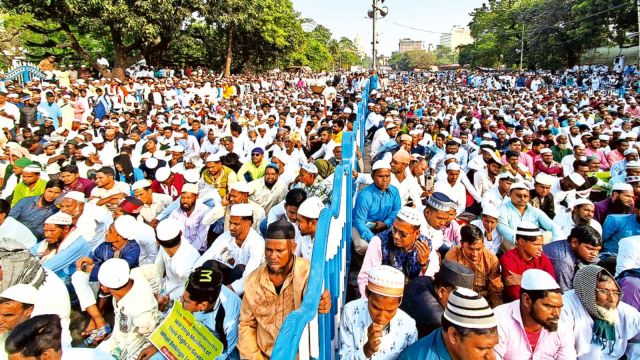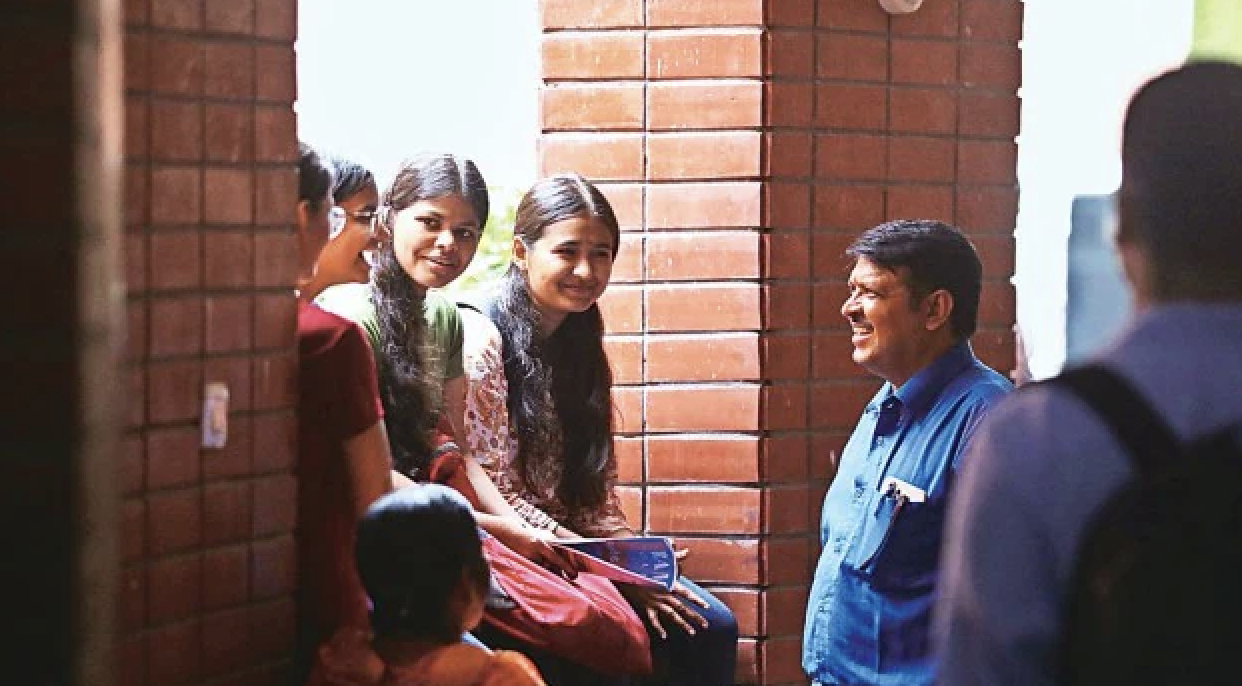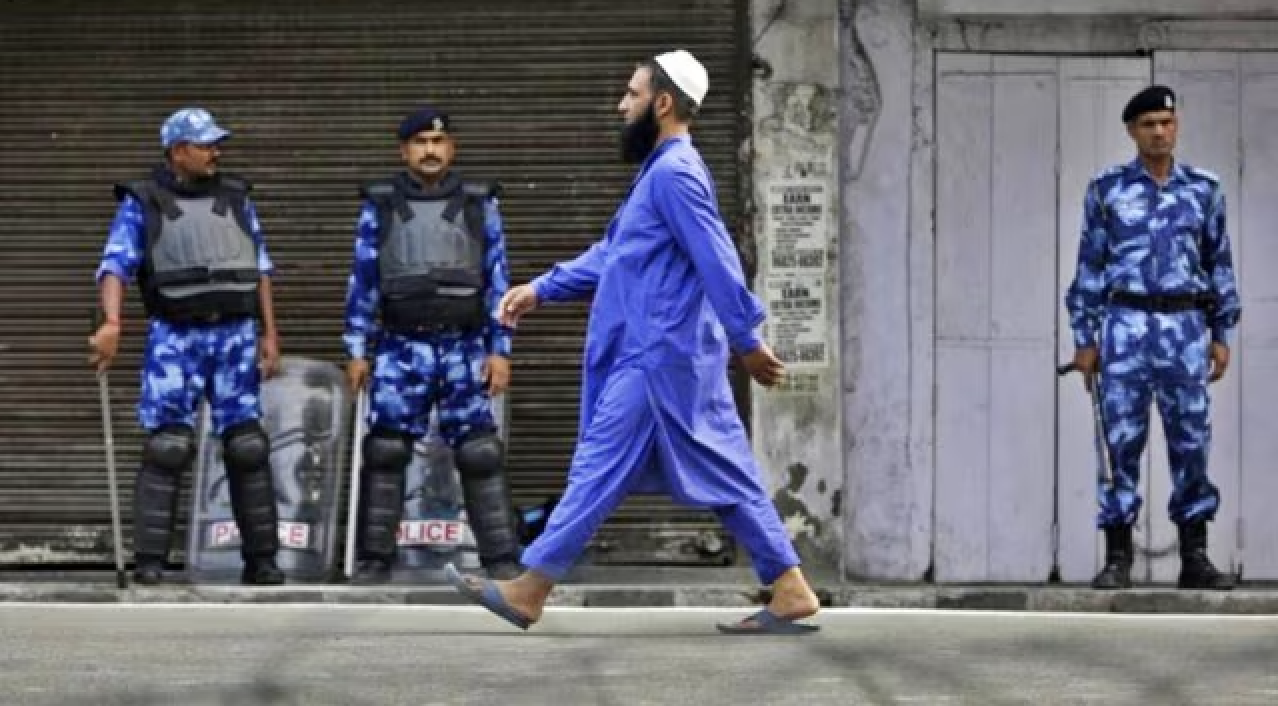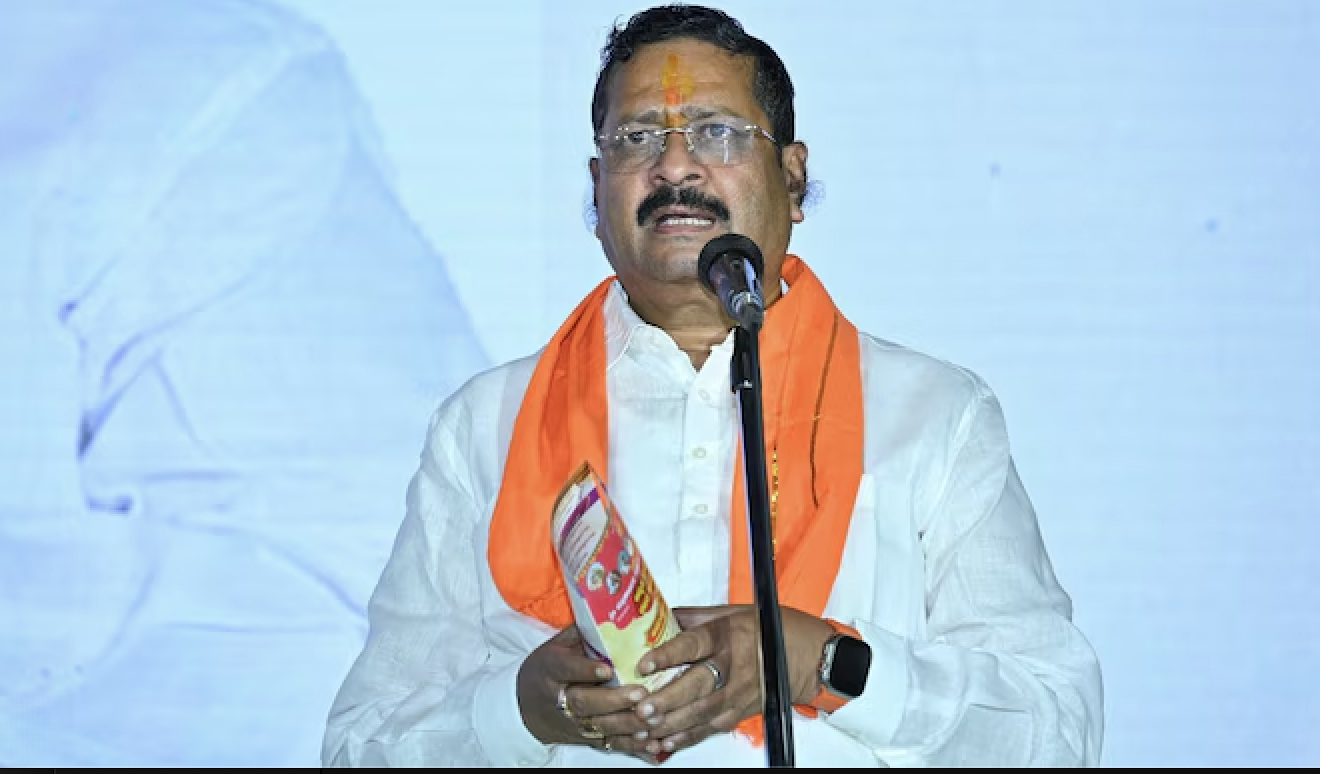
By SWETA DASH
New Delhi: In July, Uttar Pradesh, India’s most populous state, unveiled a proposed law to curb population growth through a two-child norm backed by a system of incentives and disincentives.
According to the draft Uttar Pradesh Population (Control, Stabilisation and Welfare) Bill, 2021 shared by the Uttar Pradesh State Law Commission (UPSLC), those with more than two children would be barred from applying for government jobs, seeking promotions in them, or benefiting from welfare schemes and government subsidies, ostensibly with the objectives of “sustainable development with more equitable distribution” and “healthy birth spacing”.
In June, Assam chief minister Himanta Biswa Sarma announced a similar two-child norm for state schemes, also claiming that tackling population growth was “the only way to eradicate poverty and illiteracy” among the state’s Muslims. Elected representatives of the Bharatiya Janata Party (BJP), the central ruling party, have advocated for such policies in Karnataka, Madhya Pradesh and Uttarakhand as well.
These proposals for coercive family planning measures come when fertility rates have been falling in most states. The government of India’s own projections in its 2019 report on health and family welfare statistics peg the anticipated fertility rate in 2025 and 2030, without any fresh policy intervention, to be below ‘replacement level’, a point at which population stabilises.
Experts have said (here, here and here) that coercive policies incentivising one-child or two-child norms have proven to be counterproductive—their uninitended consequences include unsafe abortions, coercive targeted sterilisitations, spike in female foeticide, reduced access to affordable reproductive and maternal healthcare and more.
The new proposals are also set in a context of Islamophobia and loose talk of Muslim population growth rates endangering Hindus, even though these fly in the face of evidence. The top brass of the Rashtriya Swayamsewak Sangh (RSS), BJP Parliamentarians including Sadhvi Pragya and Sakshi Maharaj, and other right wing groups have frequently demanded that Hindus outpace Muslims’ population growth rate.
According to Dipa Sinha, Right to Food activist and assistant professor (economics) at Ambedkar University, there is no empirical data to back claims of a population explosion. Still, two-child norm proposals return to policy-makers’ agenda at frequent intervals, offered as a means for effective allocation of scarce resources, or better reproductive and maternal health.
Those with more than two children are depicted as irresponsible free-loaders, detrimental to the overall well-being of the State, with Prime Minister Narendra Modi himself declaring in his 2019 Independence Day speech that family planning is a “form of patriotism” .
“At a time when structural inequities have exacerbated during the pandemic, these are dangerous digressions,” Sinha told Article 14.
The Myth Of India’s Population ‘Explosion’
The two most common data indicators associated with population are total fertility rate (TFR) and replacement rate. TFR is defined as the average number of children borne by women during their reproductive period. Replacement rate is the rate at which the population replaces itself from one generation to the next, if sustained over a sufficiently long period. That replacement fertility is set at an overall TFR of 2.1.
The latest National Family Health Survey, 2019-20 (NFHS-5) data from 17 states and five Union Territories (UTs) shows that only Bihar, Manipur and Meghalaya are yet to achieve a TFR of 2.1 or less, which means many states have already attained a replacement level of fertility. Among the states for which NFHS-5 data are yet to be released are UP, MP, Rajasthan and Jharkhand.
NFHS-4 (2011-16) data also said the national TFR was at 2.2. The Economic Survey 2018-19 and the Sample Registration System (SRS) data from 2017 also had similar findings about the deceleration of India’s population. This year, former union health minister Harsh Vardhan and the junior minister in the ministry of health and family welfare (MoHFW) Bharti Pravin Pawar both acknowledged these numbers as improvements.
UP and Assam, the two Indian states most actively pushing for a two-child policy, also do not have worrisome population indicators.
By 2016, the TFR of UP was 2.7, almost half of the state’s TFR in 1993. NFHS-5 data for UP are still to be released, but the technical group on population projections for 2011-2036 estimated that Uttar Pradesh will achieve replacement level TFR by 2025. Assam already has a TFR of 1.9, according to NFHS-5.
Communalising The Narrative
UP’s new Population Policy 2021-30 unveiled on 11 July by chief minister Yogi Adityanath said: “Yeh prayas bhi kiya jayega ki vibhinn samudayon ke madhya jansankhya ka santulan bana rahe.” (An effort will also be made to maintain a balance in the populations of various communities.)
On 10 June, Assam chief minister Sarma urged Muslims to adopt “decent family planning norms” because social ills such as “poverty will never be reduced unless you control your population”.
In July, BJP Lok Sabha member from Bhopal Sadhvi Pragya declared her support for two-child policies all over India. “Bangladeshis and Rohingyas” are “intruders” and a burden on the country’s limited resources, she said.
On 12 July, the day after World Population Day, a Hindi hashtag about a population control law went viral on Twitter, with the image of a man in a wheelchair, surrounded by a woman and children. Prashant Umrao, a standing counsel for the state of Goa in the Supreme Court, was among those who shared the image with an Islamophobic caption asking why it was the government’s response to provide the man government subsidies.
Days later, fact-checking website Alt News found that the image was four years old and taken in Cox Bazar, Bangladesh. It had nothing to do with UP’s population.
The population control narrative has long had communal overtones. In 2015, the then working president of the Vishwa Hindu Parishad demanded a two-child policy while referring to Census data from 2011. India would become an “Islamic state” if people did not stand up against “population jihad”, he said.
The same year, BJP Lok Sabha member from Unnao Sakshi Maharaj said Hindu women must produce “at least four children in order to protect Hindu religion”.
In 2016, Mohan Bhagwat, the Sarsanghchalak or head of the Rashtriya Swayamsevak Sangh (RSS), spoke about population growth of the “other community” at an event in Agra. He said no law stops Hindus from producing more children.
In 2018, BJP Lok Sabha member Hari Om Pandey from Ambedkar Nagar claimed that terrorism and rape cases were prevelant on account of “the rising Muslim population.”
In 2019, days after the prime minister in his Independence Day speech called family planning a patriotic act, the Shiv Sena, a former member BJP ally, said “fundamentalist Muslims” continue to follow the norm of “hum do, humare pacchis (two of us, our 25 children).”
The data and studies dispel this myth of a runaway growth in the population of Muslims in India.
In his book The Population Myth: Islam, Family Planning and Politics in India, S Y Quraishi, former chief election commissioner of India, demonstrated that the growth rate of Hindus decreased from 19.2% to 16.76% in the 2001-2011 decade, while that of Muslims fell from 29.42% to 14.6% in the same period.
Saswata Ghosh, assistant professor at the Institute of Development Studies in Kolkata, studied Hindu-Muslim fertility differentials at the district and state levels and concluded that fertility transition has been steady for both communities despite regional variations.
Data from NFHS-4 also shows that the fertility rate of Muslim women declined by 0.78% as opposed to 0.67% among Hindu women.
Sinha, the economics professor, said evidence completely contradicts the persistent narrative of disproportionate growth among India’s Muslims. “The undercurrent for such policies has often been a communal agenda, but it is packaged as the long-promised vikas,” she said.
As data from Census 2011 was released, there was talk of Muslim population growing faster, said Sinha. “In the last few years, the ‘Hindu khatre mein hai‘ (Hindus are in danger) bogey has emerged repeatedly,” she said.
‘Women Bear The Physical, Emotional Trauma’
Two-child policies are also advocated as a panacea for women’s reproductive health, ‘saving’ them from more than two child births in their lifetime.
This narrative is misleading too. According to the NFHS-4, India’s Total Wanted Fertility Rate or TWFR—the average number of children borne by a woman if all unwanted births were avoided — was 1.8, as opposed to the TFR of 2.2.
This indicates that women on average do not want more than two children. The TFR is greater than the TWFR because women have unmet contraceptive needs and/or inadequate access to affordable and safe abortion services.
Demographer Srinivas Goli, the Australia-India Institute NGN Research Fellow at the University of Western Australia, called for greater attention to the TWFR. “The difference between these two data points has a different story to tell about the lack of choice and agency of women,” he told Article 14.
UP’s draft bill for a two-child policy also states its intent to improve women’s reproductive health. Kanika Sharma, doctoral student at Emory University who has researched two-child policies, contends that there is no scientific basis to associate better reproductive health and reduced maternal mortality rates with the number of childbirths alone.
“In fact, it depends more on nutritional and health support for pregnant and lactating women.” said Sharma.
The UP draft bill promises incentives for ‘voluntary sterilisations’. It proposes a soft loan for house construction or purchase, rebates on utility bills, paid maternity or paternity leave for 12 months and more to couples who opt for sterilisation after just one childbirth.
A sustained push for sterilisations remains a pan-India population control measure, said Sharma. “India has one of the world’s highest sterilisation rates, and the burden of sterilisation is enormously high on women from marginalised communities,” she said.
According to the National Health Mission report of 2018, 93.1% of sterilisations were on women’s bodies.
At a sterilisation drive in a hospital in Karauli, a district in eastern Rajasthan, an Accredited Social Health Activist (ASHA) said her allotted sterilisation target for the year was 27—one man, 26 women.
“I struggle to find just one man to meet the target, you know,” she told Article 14. “Women are easy to find.”
A low child survival guarantee poses a further dilemma for women facing pressure to undergo sterilisation procedures. In Uttar Pradesh, for example, where the under-5 mortality rate is high, women might experience ‘sterilisation regret’ upon losing a child.
“These coercive policies do not account for that emotional trauma of the woman,” said Goli, the demographer.
In Karauli, a couple in their mid-30s recounted this tragedy. The husband told Article 14 he was left with “just a girl child” after the death of his boy — his wife had undergone a sterilisation procedure. She, meanwhile, had to deal with the trauma of losing a child as well as guilt over being unable to give birth again.
Two-child norm policies are detrimental for the survival of girl children and the sex-ratio. In 2005, IAS officer Nirmala Buch undertook a study of five states that were already implementing a two-child policy, mostly applicable for elections to local bodies. She concluded that such policies resulted in a rise in prenatal sex-determination and unsafe abortions, men divorcing their wives in order to be eligible to contest an election, and families giving up children for adoption in order to avoid disqualification in an election.
Imposing fertility limits on local leaders also increase male-biased sex ratios at birth in castes that have a strong preference for sons.
According to Sinha, a two-child policy violates the rights of the third child. Disallowing maternity leave for a third pregnancy and restricting nutritional support for women pregnant or lactating for the third time affect the third child’s chances of proper breastfeeding—critical to address infant mortality and overall child health.
Section 15 of UP’s draft bill says the disincentives will not apply to couples who have a third child if one or more of their children dies or has a disability. Rajasthan and Assam also have similar sections in their two-child policies.
Shampa Sengupta, joint secretary, National Platform for the Rights of Disabled (NPRD), said that bracketing death and disability together was “ableist”, violated the Rights of Persons with Disabilities Act, 2016, and reinforced the notion that having a disabled child is as good as having none at all.
“In doing so, the State abstains from its responsibilities towards disabled persons and portrays them as a burden for the family and the society,” said Sengupta.
Also, some disabilities such as thalassemmia are hereditary. “Does the State want to say that a couple with thalassemmia has no right to procreate?” Sengupta said.
Population Control in India, A Murky History
In 1952, India became the world’s first country to adopt family planning as a State-sponsored programme.
By the late 1960s-70s, population control programmes in India relied heavily on intra-uterine devices and sterilisations alongside encouragement from the World Bank, UN Population Fund and Ford Foundation. The push was so extreme that during the 1960s famine, US President Lyndon B Johnson refused to provide food aid until India incentivised sterilisation.
During the Emergency period, coercive male sterilisations became the ultimate focus of Sanjay Gandhi’s Five-Point Programme. About 6.2 million Indian men were sterilised in a year, “15 times the number of people sterilised by the Nazis”, according to science journalist Mara Hvistendahl.
Since then, the focus of target-based population control has been women’s bodies. Female sterilisations rose from 25% in 1976–77 to 80% in 1977–78. That percentage has not declined since.
Several states already implement a two-child policy in different forms, all with the objective of population control. The Odisha Zilla Parishad Act 1991, Telangana Panchayat Raj Act 1994, Andhra Pradesh Panchayati Raj Act 1994, Haryana Panchayati Raj Act 1994 and Gujarat Local Authorities Act 2005 bar individuals with more than two children from contesting elections. The Madhya Pradesh Civil Services (General Condition of Services) Rules bars individuals with a third child born after 2001 from government and judicial service.
Sinha said the two-child norm is also implemented in other “roundabout” ways. For instance, the Pradhan Mantri Matru Vandana Yojana, the national maternity entitlement scheme, is only applicable for the first live birth. “The exclusions caused by such a measure are just devastating, to say the least,” she said. In addition to disallowing maternity leave for a third pregnancy, these become tactics to withdraw State support from women who have multiple pregnancies, she said.
Incentives And Disincentives In Two-Child Policies
Data from several Indian states shows that several socioeconomic indicators influence fertility rates. The NFHS-4 shows that TFR among women in India with 12 or more years of formal education is 1.7, while it is 3.06 for women with no formal education. Kerala, for instance, reduced the state TFR to 1.6 by investing in girl-child education, employment opportunities and a strong healthcare system.
Disincentives listed in all two-child policies involve curbing access to State-sponsored welfare mechanisms for the general public. As the Hunger Watch survey conducted by the Right to Food campaign in October 2020 suggests, welfare mechanisms such as the public distribution system (PDS) already fell short of requirement during the pandemic. Sinha warned that when people have already been pushed into penury and debt, the threat of curbing welfare measures is “very sadistic”.
Goli said there would be practical challenges in implementing the newly proposed two-child policies, especially the incentives for those undergoing sterilisations. “First, the fertility rate is already below 2 for those with more than 10 years of formal education. Most government employees are required to have a minimum of that many years of schooling, so we can assume that most of them are already eligible for the incentives. Does the state have resources for this?” He added that if half of the nearly 15 million below-poverty line households in UP step forward for these incentives, the burden on the exchequer would be tremendous.
Sexual And Reproductive Health Rights For All
Experts agree that two-child policies are not even remotely interested in ensuring Sexual and Reproductive Health Rights (SRHR) for all.
In 2018, the Guttmacher-Lancet Commission defined SRHR as “a state of physical, emotional, mental, and social well-being in relation to all aspects of sexuality and reproduction, not merely the absence of disease, dysfunction, or infirmity”.
Sanjoy Ghose, senior advocate in the Delhi High Court, said that when the two-child policy implicit in the Haryana Panchayati Raj Act, 1994 was challenged, the Supreme Court upheld its provisions and also rejected submissions about women being disparately impacted by the disqualification provisions of the law.
“Such a judgment then shows that we have still not been able to secure these rights for women and they continue to face double discriminations because of such policies,” said Ghose. He contended that these policies, “a recipe for disaster”, must be challenged in the courts as contravening the Right to Life and Equality.
Sharma said the recurring focus on two-child policies must be discarded. “Instead, the State must facilitate people’s right to maintain bodily autonomy, have children,” she said, “not have children, and parent the children in safe and sustainable communities.”
This story first appeared on article-14.com






